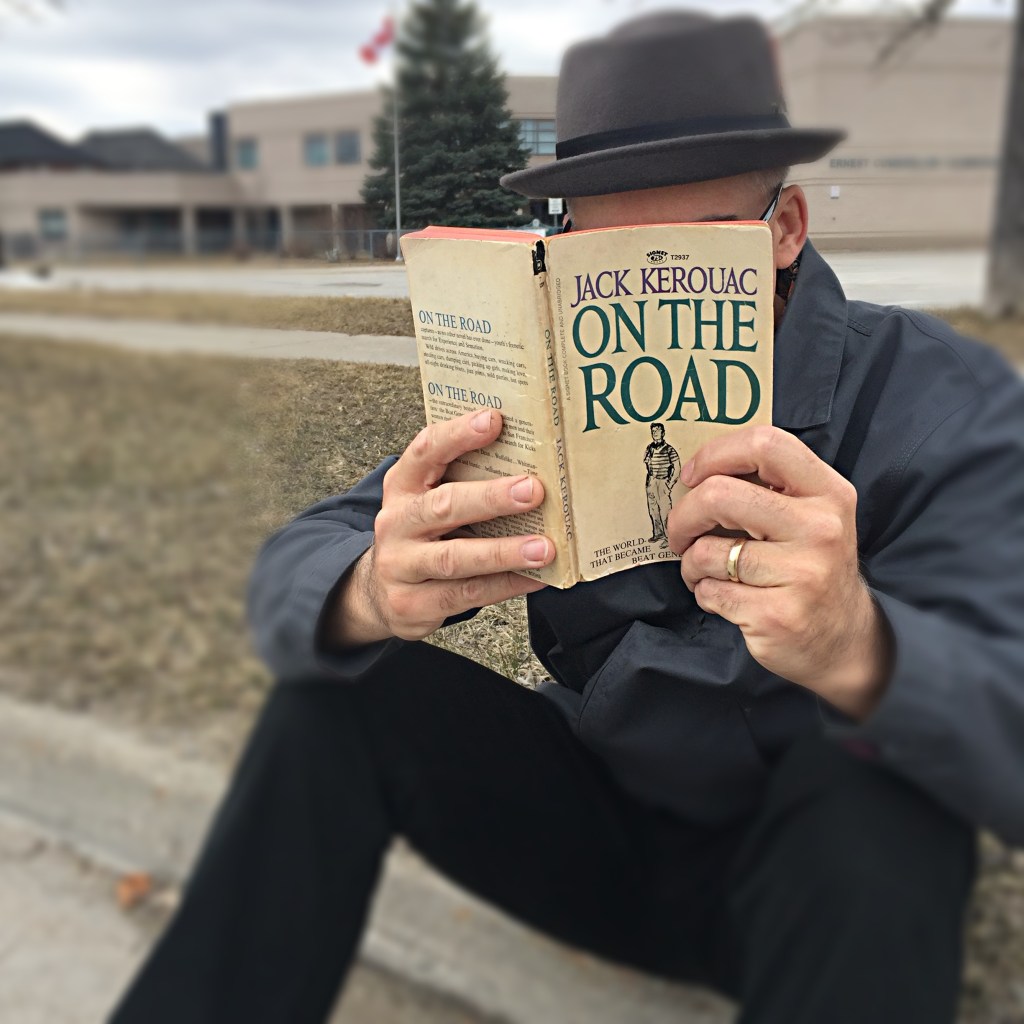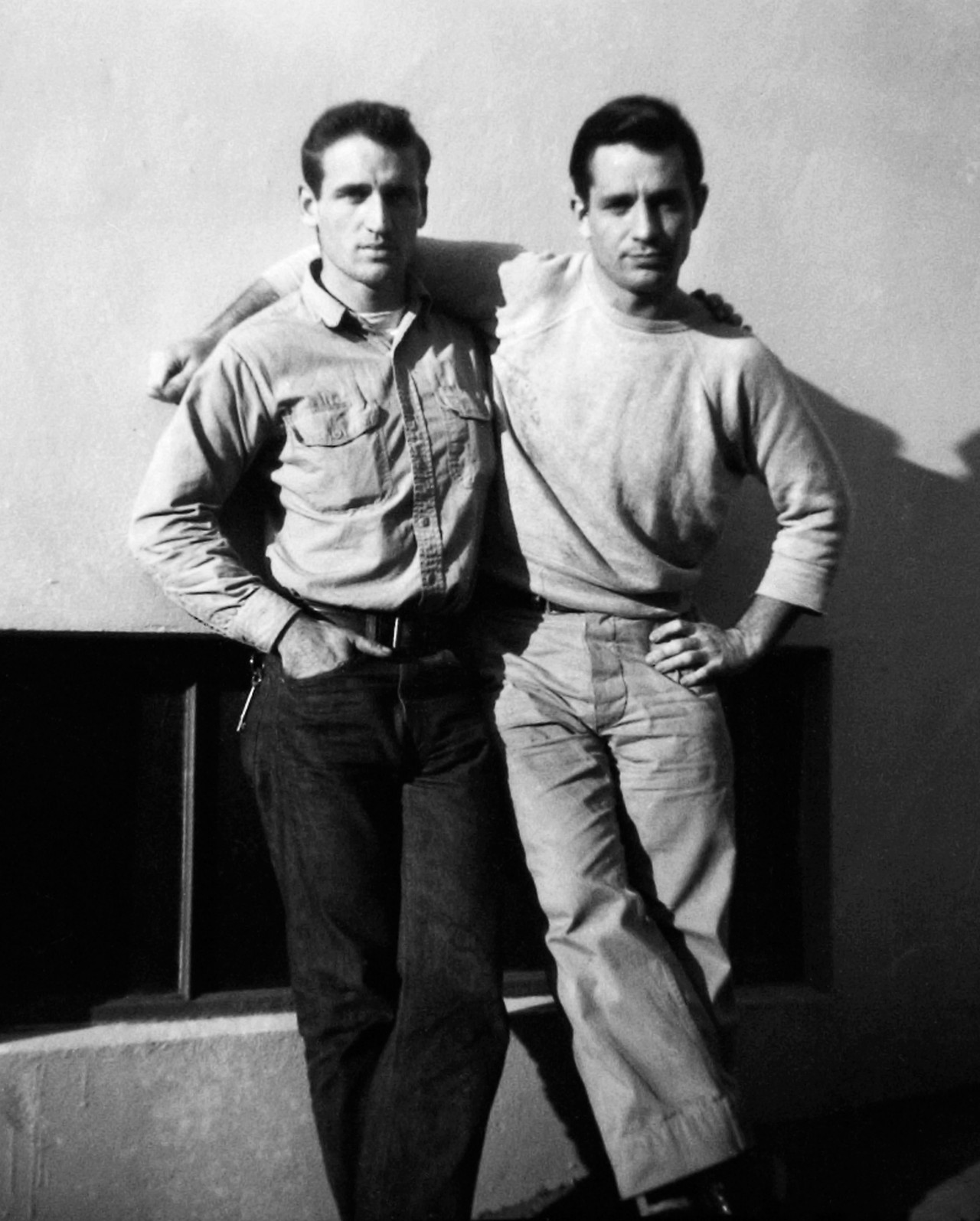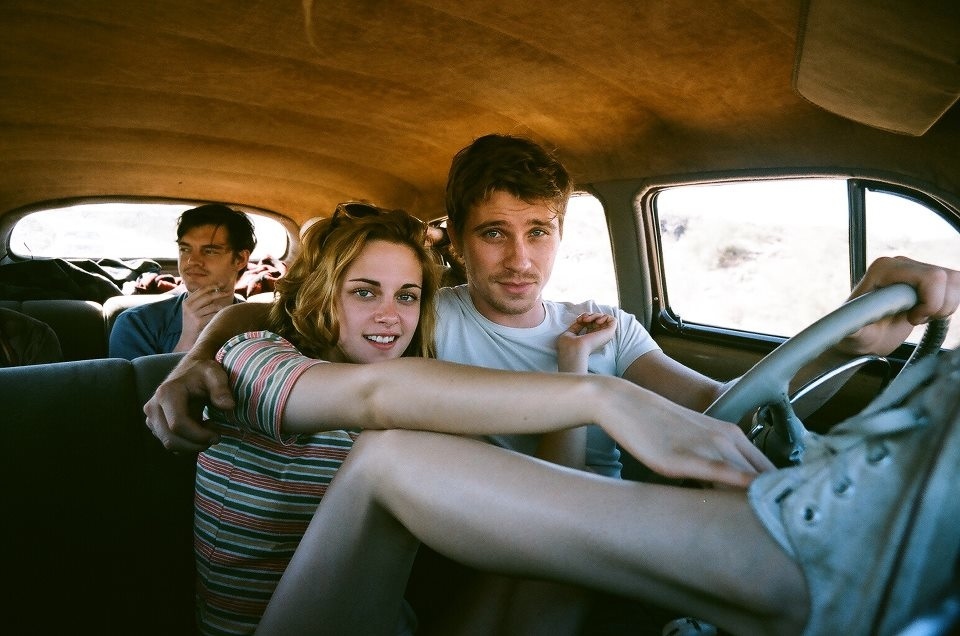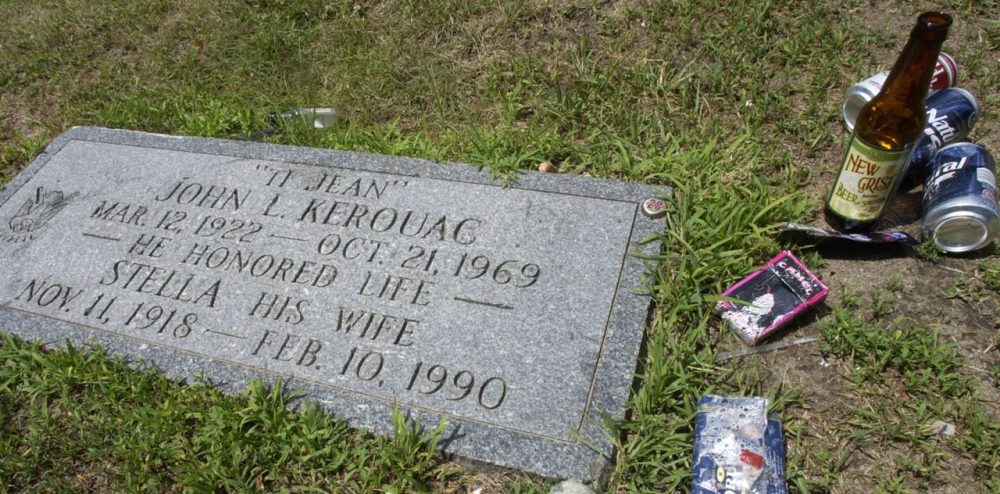“Out we jumped in the warm, mad night, hearing a wild tenorman bawling horn across the way…hands clapping to the beat and folks yelling “Go, go go!”…Dean was already racing across the street with his thumb in the air yelling “Blow, man! Blow!”
“On the Road” by Jack Kerouac (1957)

As a cat who has always dug all things “Fifties”, I became aware of On the Road in high school. I found the book in the school library and checked it out. I never took it back.
On the Road is a roman à clef of a group of friends in post-war America that charts their adventures crisscrossing the country in pursuit of kicks and a sacred state of being. Kerouac based the book on real life events that he and his colleagues experienced over the course of several years.

Jack Kerouac was born of French Canadian parents in Massachusetts in 1922. His 1957 novel On the Road may be the single coolest book ever written and for more reasons than just its content or style. It reflected his life up to that point. In the post-war period of the late ’40’s, Jack and his friends lived a life they began to call “beat”. The definition of this term reflects the attitude that makes this novel so wonderful. Kerouac altered the original meaning of the word from the “beaten down” experience of African American life at this time to an expression of living an “upbeat” life, one free of the restrictions of convention. It also reflected the beat’s love of jazz music; to be “beat” was to move like improvisational jazz; “on the beat”. What makes it the coolest book ever written is the fact that it was based on real life and written in an earthy, non-academic style – two things that make it infinitely accessible and relatable. As a guy who has always been somewhat of a writer and who has had a few real life experiences himself, I think it’s so cool in part because Jack has done exactly what I have always wanted to do and he has written a book in exactly the way I always wanted to.
Kerouac makes holy the gang’s attempt to reach a place of pure bliss in their lives through escape, through travel and with the help of drugs, poetry and jazz. Featured jazzbos in the book include George Shearing and Slim Gaillard. The gang laments Shearing’s transformation from free-flowing wild man to a purveyor of “cool and commercial” music. Gaillard, on the other hand, is revered for his scat-brained lunacy. The drug of choice is simple marijuana, referred to as “tea” and the poetry is something that all the principals indulge in to one extent or another, predominantly the Carlo Marx character based on a famous beat poet.
Kerouac based all the characters on his real life friends, including such notables as William S. Burroughs (“Old Bull Lee”) and Allen Ginsburg (“Carlo Marx”). The heroic Dean Moriarty was based on the enigmatic Neal Cassady. The story surrounding Neal and his wife, Carolyn, reminds me that you really should look up these people and how they relate to Kerouac and On the Road and all of the rest of the community and events and how they swirl in the periphery. It makes for a fascinating thread. The novel helped to start a whole counterculture that started with the beats and morphed into hippies.

The first real joy I got from this novel came from the book’s depiction of spring. Kerouac likes to talk about how, with the coming of spring, the “land opened up” and the road called to the book’s narrator Sal Paradise who is Kerouac himself. Quite often, uneventful winters are summed up in one line about working and writing throughout the cold months. And then spring comes and Sal hangs his thumb over the road, hitch hiking to meet friends situated all over the map. He may hitch or “ride share” his way to Denver where the whole gang is waiting or he may cross the country to meet Dean in San Francisco, a place Kerouac calls “the ragged promised land. The fantastic end of America”. There the two friends will deal with Dean’s domestic troubles and hit the jazz clubs to “get it all dug”. Sal may travel on his own and land in Bakersfield where he will fall in love with a Mexican girl and work the land with her family. Then, Dean may pick him up in a stolen/borrowed car and four of them may bomb down to New Orleans to dig Old Bull Lee and read the “manuscript of the swamps”. Then it might be Sal and Dean in Mexico City where they battle dysentery and test their friendship.
In the 1990’s, a film version was proposed that would have supposedly starred Johnny Depp and Sean Penn. If Francis Ford Coppola had directed it in the style of his atmospheric Rumble Fish it would have been all world. A film version was released in 2012 and starred Kristin Stewart, Viggo Mortenson, Steve Buscemi, Terrence Howard and others. While it’s great to have a film version of the novel, my complaint with this movie is it’s emphasis on the sex in the novel. Now, the novel as published did not contain a lot of sex. But this film utilized what’s known as “the scroll”.

On the Road is written in a frenetic style with little punctuation. Famously, Kerouac had fed a 120-foot scroll of paper into his typewriter and launched into a three-week creative burst, writing the book in a very stream of consciousness manner. Indeed, it was partly this that lead to Truman Capote dismissing the book saying “That’s not writing, It’s typing”. The scroll had to be edited in order to make a novel that could be published and a lot of the sex of course was excised. So, the screenplay gets away with adding sex that was not in the actual novel. But punching up this angle seems to me like a device by which the film can draw young viewers. As if to say that to make this old book palatable to modern audiences, it had to contain debauchery; like colourizing I Love Lucy. The wonder of a novel like On the Road is diminished in a way by presenting it this way.
A large part of the appeal of this novel is the way that Kerouac turns a phrase. It is sort of an eden ahbez meets Raymond Chandler barstool prophet vibe. For example, when Sal is living with his Mexican girl, Kerouac writes: “I hid in the grapevines digging it all. I felt like a million dollars. I was adventuring in the crazy American night”. And, when he leaves her: “We turned at a dozen paces, for love is a duel and looked at each other for the last time”. And a quote that maybe exemplifies the spirit of the novel better than any other: “Our battered suitcases were piled on the sidewalk again. We had longer ways to go. But no matter; the road is life”.
Jack Kerouac not only wrote a novel the way I would like to but he also retired the way I would like to. He spent his final days in Florida, trying to get out from under the legend he had unwittingly become. He died in St. Petersburg in 1969. He was 47. For information on a play based on Kerouac’s time in Florida, check out this episode of the fantastic podcast series from the Florida Historical Society.

If you’re into Mid-Century Media, as I am, you need to read On the Road, as you likely already have. While it is a novel best experienced before you reach age 25 and have settled down, it is still not too late to read it. It is readily available at Amazon and Abe Books. There is even an audio book version available on YouTube.